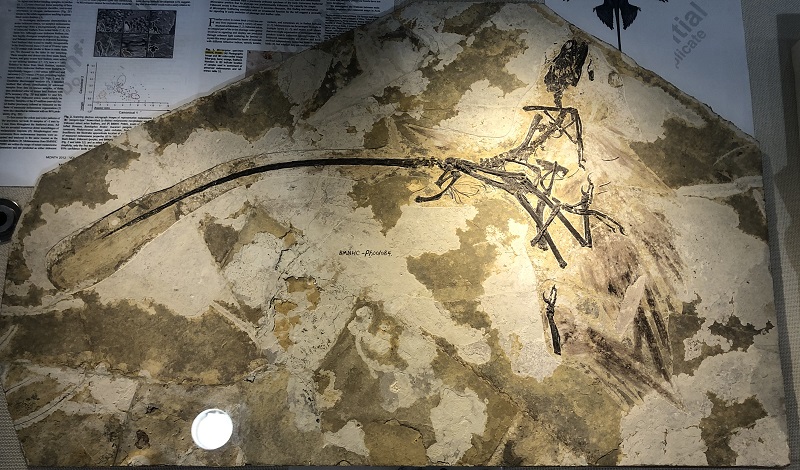BH Staff | May 19, 2023
Age and Locality: Early Cretaceous, Liaoning Province.

Microraptor gui is a fascinating species of small, feathered dinosaur from the Early Cretaceous period, approximately 120 million years ago. This remarkable creature was discovered in the Liaoning Province of China, an area renowned for its exceptionally well-preserved fossil beds which have contributed significantly to our understanding of prehistoric life.
Microraptor gui belongs to the group of theropod dinosaurs, which are closely related to modern birds. What makes Microraptor especially interesting is its unique feather arrangement; it had long feathers on its arms, legs, and tail, suggesting it had four wings. This has led scientists to propose that it could glide or perhaps even achieve powered flight, offering crucial insights into the evolutionary transition from dinosaurs to birds.
The body size of Microraptor gui was relatively small, with an estimated length of about 2.5 feet (76 cm), including its tail, and it likely weighed around 2.2 pounds (1 kg). Its diet is believed to have been omnivorous, including small vertebrates and possibly plants.
Microraptor’s discovery has sparked significant debate and excitement within the paleontological community regarding the evolution of flight and the relationship between dinosaurs and birds. Its well-preserved fossils, complete with feather impressions, have been instrumental in understanding the coloration of dinosaurs, with studies suggesting that Microraptor had iridescent feathers, similar to those of some modern birds.
Overall, Microraptor gui represents a crucial link in the evolutionary chain leading to birds and highlights the diversity and complexity of life in the Cretaceous period.
